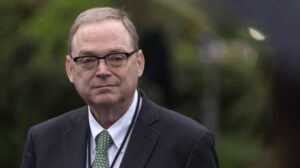
In Boise, the city council is considering new regulations regarding the display of Pride flags along Harrison Boulevard, a move that has sparked both support and concern among residents. The discussion centers around the oversight of these symbolic displays, which have become a staple in the community, especially during Pride Month.
Jordan Hall, a dedicated volunteer, has been at the forefront of placing Pride flags in the median along the iconic boulevard. For many, these flags represent a celebration of diversity and inclusion within the city. However, the council’s proposal aims to establish clearer guidelines and oversight for such displays, citing concerns about safety and uniformity.
Background and Current Practices
Harrison Boulevard, known for its historic homes and tree-lined streets, has long been a canvas for community expression. Each year, during Pride Month, volunteers like Hall meticulously place flags to honor the LGBTQ+ community. This tradition is seen as a vibrant expression of support and solidarity.
Currently, the process of placing these flags is informal, relying on community volunteers and donations. However, the lack of formal oversight has led to debates about who should manage these displays and how they should be regulated. The city council’s proposal seeks to address these issues by potentially introducing permits or designated times for flag placement.
Community Reactions and Concerns
The proposal has elicited mixed reactions from the community. Supporters argue that having a formal process will ensure safety and consistency, particularly in maintaining the flags and preventing potential hazards on the busy boulevard. Meanwhile, opponents fear that increased regulation could stifle community-driven initiatives and limit the spontaneity that makes these displays special.
Local resident and activist, Emily Carter, expressed her concerns, stating,
“The beauty of these displays is that they come from the heart of the community. Adding layers of bureaucracy could dampen that spirit.”
Expert Opinions and Historical Context
Experts in urban planning and community engagement suggest that finding a balance between regulation and community expression is crucial. Dr. Mark Thompson, a professor of urban studies, noted,
“Cities across the country face similar challenges. The key is to create guidelines that support community expression while ensuring public safety.”
Historically, cities have grappled with how to manage public displays, from holiday decorations to political banners. In many cases, regulations have been implemented to standardize practices without stifling expression. Boise’s current debate reflects a broader national conversation about the role of public spaces in community identity.
Looking Ahead: Implications and Next Steps
The city council is expected to hold public hearings to gather input from residents before making a final decision. These discussions will likely shape the future of how public spaces are utilized for community expression in Boise.
For volunteers like Jordan Hall, the outcome of this proposal will significantly impact their efforts. Hall remains hopeful that a compromise can be reached, allowing the tradition of Pride flag displays to continue in a way that honors both community spirit and public safety.
As Boise navigates this complex issue, the city serves as a microcosm for similar debates happening nationwide. The resolution of this matter will not only affect local traditions but could also set a precedent for how cities balance regulation and community-driven initiatives in the future.






